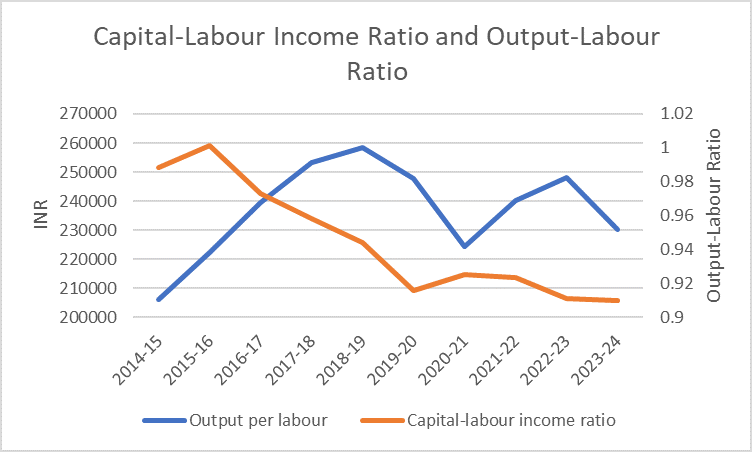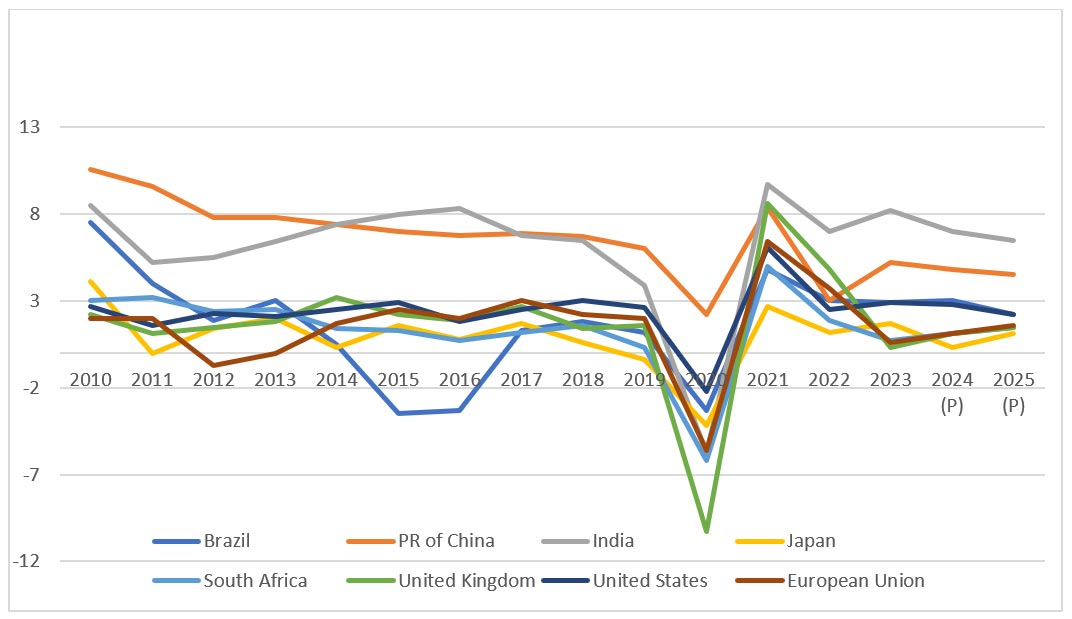Font size:
Print
Debunking the Myth of Jobless Growth in India
India’s Economic Growth Is Creating Jobs — Not Jobless Growth
Context: India remains the fastest-growing major economy, with projected growth rates of 7% (2024-25) and 6.5% (2025-26).
More on News
- However, concerns about “jobless growth” persist, with critics arguing that economic expansion has not translated into sufficient employment.
- This article refutes that claim, demonstrating that India’s growth has indeed generated jobs, supported by robust data on employment elasticity, consumption trends, and labour market dynamics.

Consumption-Driven Growth Model
- Consumption-led Economy: India’s economy is consumption-led, with Private Final Consumption Expenditure (PFCE) contributing over 55% of GDP.
- Higher Incomes: Rising consumption indicates higher household incomes, which stem from employment growth.
- Contradicting Jobless Growth: If joblessness were rampant, consumption would stagnate—yet data shows consistent growth in both rural and urban spending, contradicting the jobless growth narrative.

Employment Elasticity and Job Creation
- Employment elasticity—measuring how job growth responds to GDP growth—stood at 1.11 between 2017-2023, meaning a 1% GDP increase led to a 1.11% rise in employment.
- This marks a significant improvement from near-zero elasticity in 2011-2016.
- The RBI-KLEMS database estimates 170 million jobs added between 2016-17 and 2022-23, further debunking claims of stagnant employment.
Capital Intensity and Labour Productivity
- Capital stock grew by 74% in the last decade, while employment rose by 36%, indicating capital deepening.
- Despite this, labour’s income share remained stable (~56%), suggesting that job growth has kept pace with economic expansion.
- Labour productivity also increased by 12% (2014-15 to 2023-24), reinforcing the link between growth and employment.
Demographic Dividend Challenge
- By 2036, India’s working-age population (20-59 years) will reach 880 million, requiring 10 million new jobs annually.
- However, the Beveridge curve analysis reveals mismatches in the labour market, where job vacancies and unemployment do not align perfectly.
The Beveridge Curve is an economic model that illustrates the relationship between job vacancies and unemployment rates, providing insights into labor market dynamics. It is named after William Beveridge, who first identified this correlation.
- This signals structural issues in job quality and skills, not a lack of employment opportunities.
Policy Recommendations
- Boost Manufacturing Employment: Initiatives like Make in India and PLI schemes must focus on labour-intensive sectors (textiles, construction) to absorb surplus agricultural workers.
- Enhance Human Capital: Expanding vocational training and education will bridge skill gaps and improve workforce readiness.
- Formalise Informal Jobs: Strengthening social security and labour rights can transition informal workers into stable employment.
- Encourage Entrepreneurship: Easier credit access and regulatory reforms can spur SME growth, a key job creator.
India’s growth is not jobless—employment has expanded alongside GDP, supported by consumption trends and labour market data. However, structural reforms are needed to improve job quality and harness the demographic dividend. With targeted policies, India can sustain inclusive growth and achieve its Viksit Bharat vision.
